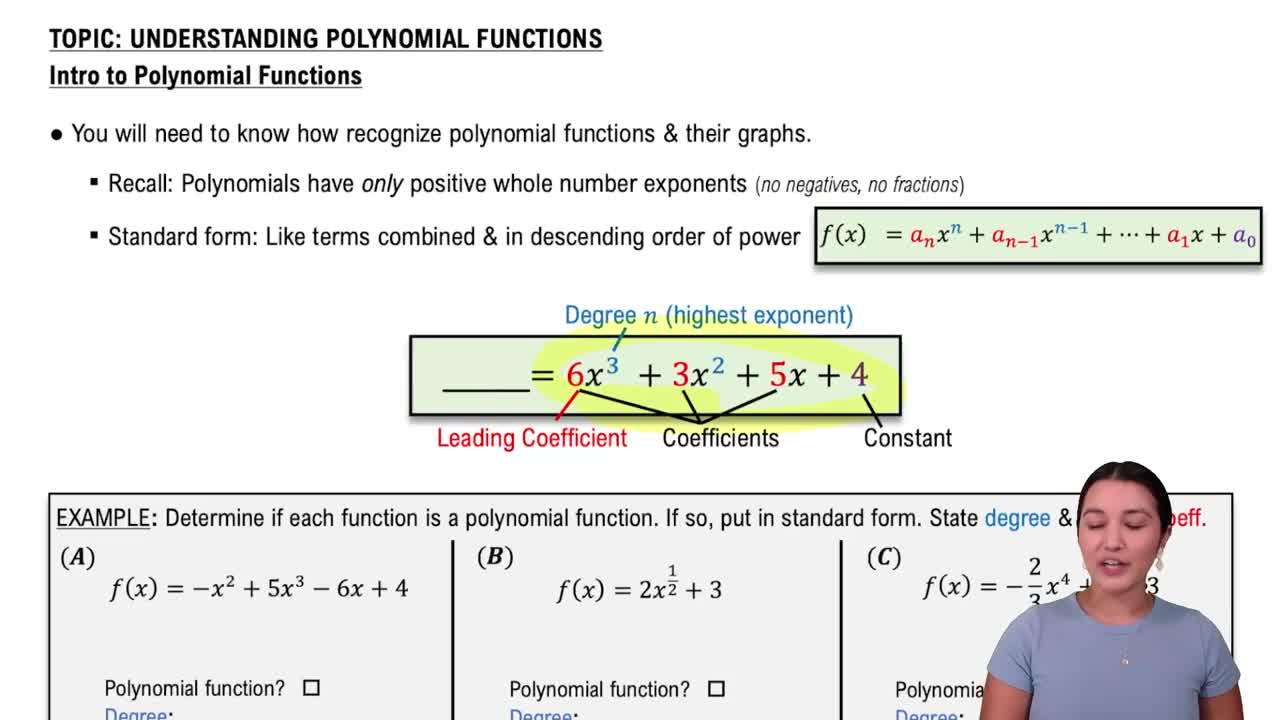Here are the essential concepts you must grasp in order to answer the question correctly.
Factor Theorem
The Factor Theorem states that a polynomial f(x) has a factor (x - c) if and only if f(c) = 0. This means that if you substitute c into the polynomial and the result is zero, then (x - c) is a factor of the polynomial. This theorem is essential for determining factors of polynomials and is often used in conjunction with synthetic division.
Recommended video:
Synthetic Division
Synthetic division is a simplified method for dividing a polynomial by a linear binomial of the form (x - c). It involves using the coefficients of the polynomial and performing a series of multiplications and additions to find the quotient and remainder. This technique is particularly useful for quickly determining if a polynomial is divisible by a given factor without performing long division.
Recommended video:
Polynomial Functions
Polynomial functions are mathematical expressions that involve variables raised to whole number powers, combined using addition, subtraction, and multiplication. The degree of a polynomial is determined by the highest power of the variable. Understanding polynomial functions is crucial for applying the Factor Theorem and synthetic division, as it provides the framework for analyzing their roots and factors.
Recommended video:
Introduction to Polynomial Functions



